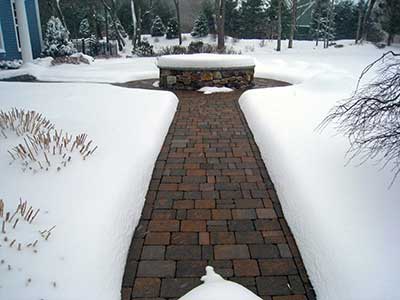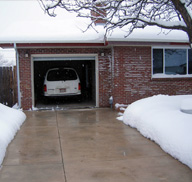About Radiant Heat and Snow Melting Systems
The Introduction of Radiant Heat
Radiant heat is the oldest heating technology known to man. The ancient Chinese were using radiant heat as early as 10,000 B.C. to heat their beds, and by 500 B.C., the Greeks and Romans had succeeded in creating an efficient radiant floor heating process known as the "hypocaust".
 The system utilized pillars that raised the floors to create a space underneath
where hot air could circulate. Spaces were also left inside the walls so that hot
air and smoke from the furnace would pass through the enclosed areas under the
floor and out of flues in the roof. The heat radiated through the walls
along the way to warm the rooms.
The system utilized pillars that raised the floors to create a space underneath
where hot air could circulate. Spaces were also left inside the walls so that hot
air and smoke from the furnace would pass through the enclosed areas under the
floor and out of flues in the roof. The heat radiated through the walls
along the way to warm the rooms.
A worker would constantly feed the fire in a furnace that was usually located against the outside wall of the structure. Water was also heated and circulated under floors, marking the introduction of hydronic floor heating. Today’s hydronic radiant heat systems feature specially treated water, along with a boiler to provide the heat, and a pump to circulate the liquid through a closed loop of PEX tubing in the floor. While the hypocaust marked the first true radiant under floor heating system, the heating process was labor-intensive and high in fuel costs, which made it a luxury for those at the public baths or living in villas.
Radiant Heat Technology
 In addition to being the oldest heating technology known to man, radiant heat is also the
most efficient. Radiant heat is simply a transfer of energy that radiates heat from the
source. Today's radiant heat systems feature one of two radiant heat technologies:
hydronic or electric. Both technologies are used for radiant heated driveways
(snow melting) as well as radiant heated floors. Hydronic radiant heat systems
utilize specially treated liquid that is heated and then pumped through a series of
PEX tubing embedded in the driveway (or floor) while electric systems feature heat
cable that is also spaced and installed in the concrete, asphalt or under
pavers. The heat cable generates warmth that spreads outward,
warming the driveway and melting snow and/or ice.
In addition to being the oldest heating technology known to man, radiant heat is also the
most efficient. Radiant heat is simply a transfer of energy that radiates heat from the
source. Today's radiant heat systems feature one of two radiant heat technologies:
hydronic or electric. Both technologies are used for radiant heated driveways
(snow melting) as well as radiant heated floors. Hydronic radiant heat systems
utilize specially treated liquid that is heated and then pumped through a series of
PEX tubing embedded in the driveway (or floor) while electric systems feature heat
cable that is also spaced and installed in the concrete, asphalt or under
pavers. The heat cable generates warmth that spreads outward,
warming the driveway and melting snow and/or ice.
Today's radiant heated driveways are fully automated and very efficient. Both hydronic and electric snow melting systems consist of three basic elements: a heating element, activation device (snow sensor), and a master controller.
Call a Radiant Heat Expert today and see what Options are Best for You (888.488.9276).
Visit These Links for More Information on Radiant Heat: |
|||||

|
How Heated Driveways Work |

|
Driveway Heating Options |

|
The Benefits of Snow Melting Systems |
|
|
Finding the Best Radiant Heat Provider |
|
Portable Snowmelt Traction Mats |
|
Radiant Heat Articles |

|
Photos of Snowmelt Systems |

|
Frequently Asked Questions |

|
Professional Design Services |
